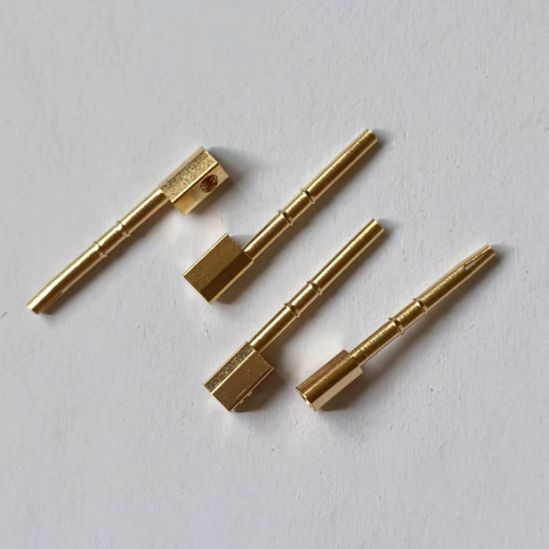- English
- Español
- Português
- русский
- Français
- 日本語
- Deutsch
- tiếng Việt
- Italiano
- Nederlands
- ภาษาไทย
- Polski
- 한국어
- Svenska
- magyar
- Malay
- বাংলা ভাষার
- Dansk
- Suomi
- हिन्दी
- Pilipino
- Türkçe
- Gaeilge
- العربية
- Indonesia
- Norsk
- تمل
- český
- ελληνικά
- український
- Javanese
- فارسی
- தமிழ்
- తెలుగు
- नेपाली
- Burmese
- български
- ລາວ
- Latine
- Қазақша
- Euskal
- Azərbaycan
- Slovenský jazyk
- Македонски
- Lietuvos
- Eesti Keel
- Română
- Slovenski
- मराठी
- Srpski језик
What are the Functions of Aviation Plug Pins?
2025-08-07
As the gears of industrial equipment and the chips of high-end electronic systems dance in harmony in modern factories, the aviation plug pins hidden deep within the connection ports—these seemingly insignificant metal components, with their irreplaceable high reliability, quietly become the "invisible cornerstone" that supports the stable operation of equipment across various industries.

Building a stable connection channel is the core mission of aviation plug pins. As you know, when the pin and socket achieve millimeter-level precision, they carry much more than just a physical connection: electrical signals shuttle through them, transmitting control system commands to the actuators like lightning; electricity flows through them, providing a constant supply of energy to the roaring power units. Especially in the thunderous vibrations of industrial workshops, the unique elastic structure of the plug pins is like a skilled balancer, skillfully offsetting the vibration caused by mechanical impact, ensuring that the connection points remain tightly connected like lovers in embrace. Imagine, without such toughness, the robotic arms of automated production lines would have long been paralyzed by frequent signal interruptions.
Different scenarios require different "skills" from the plug pins. Inside aerospace equipment, gold-plated pins, with their near-zero contact resistance, safeguard the pure transmission of satellite communication signals at tens of thousands of meters. Within the confined space of medical equipment, hair-thin pins create multiple signal channels, allowing monitors to capture every subtle pulse of life. Within the battery compartment of new energy vehicles, high-temperature-resistant pins effortlessly transition between extreme cold of -40°C and scorching heat of 125°C, building an impenetrable barrier for the accurate transmission of battery status monitoring data.
As the tide of Industry 4.0 surges forward, the technological boundaries of pins are constantly expanding. Consider the 1.27mm pin pitch of mainstream products, which doubles the number of signal channels in a space the size of a fingernail. The use of wear-resistant alloy materials extends the plug-in lifespan to over 10,000 cycles—meaning even with three plugs and unplugs per day, they can still safely operate for nine years, more than three times the lifespan of traditional products. Such advancements not only maintain the bottom line of precision connections but also provide confidence in the long-term, stable operation of equipment.
The market's popularity has long proven the value of connectors. In the industrial automation sector alone, the market size is projected to reach 2.8 billion yuan in 2024, with an annual growth rate exceeding 15%. With the widespread deployment of 5G base stations and the interconnection of smart grids, specialized connectors with electromagnetic interference resistance and high-speed transmission capabilities are experiencing a surge in demand. This surge is steadily propelling the entire industry toward higher precision and more complex functions.
From robotic arms on factory floors to spacecraft soaring into the sky, aviation plug pins, with their millimeter-level precision, silently support the efficient operation of millions of devices, becoming the indispensable "connector nerve" of the modern industrial system.



